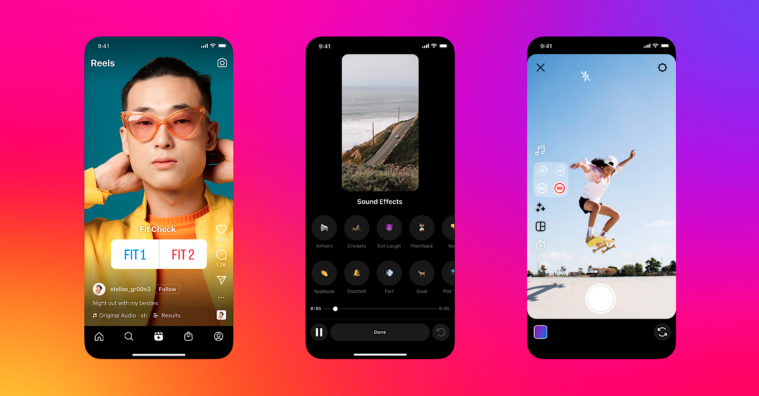Social media is in a state of perpetual change. Social channels constantly evolve and adapt their features based on user appeal and potential growth. This continuous flux also presents a great opportunity for marketers looking for new creative ways of reaching their audience. Following up and coming social media trends that are expected to dominate this year, is key for a successful marketing strategy.
💡 Read Creating a Marketing Strategy that Works: Benefits, Steps, Tools
First, let’s address the elephant in the room. Social media usage is on the rise and steadily growing. With over 4.74 billion active users, which is a boost of 4.2% compared to the number of users reported the previous year. That means 59.3% of the world’s population is active on social media. The pandemic that started in 2020 is without a doubt responsible at least in part for the huge number of social media users. The data confirms it, as people spend more time on their preferred social channels.
This sounds great, right? More users means being able to target a bigger market share. However, it also means increased competition as all the effort is concentrated on a number of high-performing social media channels, which can quickly translate to content saturation, user engagement fatigue, and going over budget. So let’s look at some of the social media trends to focus your marketing efforts on.
Social Media Trends to Watch Out For in 2024
Utilizing the following social trends is sure to help you stand out and increase your brand visibility, market reach and user engagement.
1. Authenticity is the key
Apart from video content that keeps on appearing on the social media trends list for the last couple of years, authenticity has slowly become the determining factor of success for social media platforms. In the time of overly-edited images and videos and customer cynicism, authenticity, posts in real-time and posts that customers can relate to are more of a demand than an expectation.
The popularity of TikTok and the rising BeReal platform demonstrates precisely that – the need for filter-free content and real relatable situations and personalities. This trend is slowly taking precedence over traditional, filtered, “insta” content.
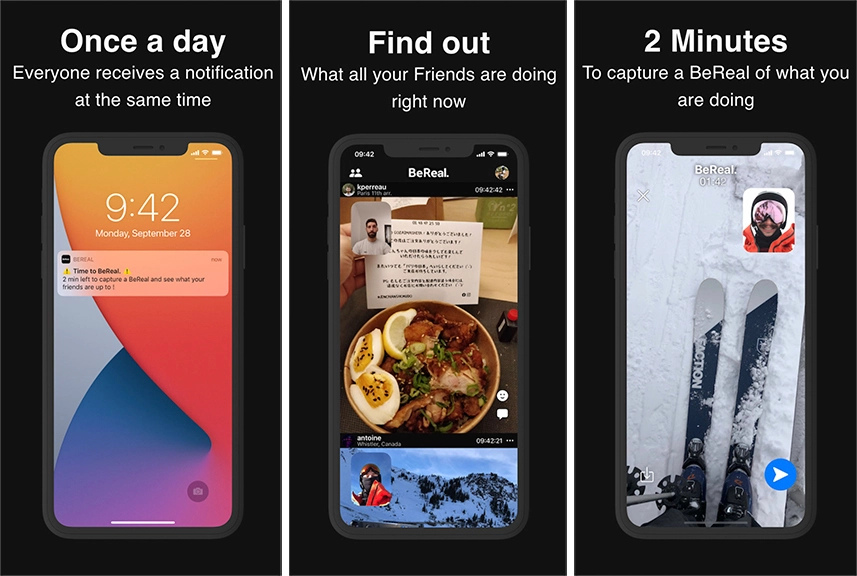
2. Short video & TikTok
Speaking of video content, naturally, Youtube remains the leader in that area. Especially so, for 92% of marketers that tend to view it as a vital part of their marketing strategy. The video momentum has only increased as major social media platforms like Facebook, Twitter and LinkedIn improve their video capabilities to catch up with the growing popularity and new trends.
But an interesting trend has steadily grown with the rise of TikTok. Short-form videos have become something of a popular phenomenon with younger audiences. According to a study, TikTok currently boasts 1.4 billion monthly active users and will reach 1.8 billion by the end of 2023. Generation Z is the driving demographic behind this trend, but others are following suit. And it is clear why short engaging videos are so widespread. They are easy to create and fairly inexpensive, which results in some great user-generated content.
Instagram took the step towards the shorter video format and introduced it to its platform in the form of Instagram Reels. Even though their key demographic differs, this type of video “microcontent” has seen a boost in popularity with them as well. And as the attention span shrinks from generation to generation, this content trend will only increase. Influencers for example use these short videos to promote partner products and services to their audiences.
Read Social Media PR: 5 Tips and Tricks for Small Businesses
3. Micro influencers and their effectiveness
On the topic of influencer marketing, this trend is going to be even more important this year. As more and more users shop from home, your brand promotion strategy will be defined by partnering with influencers to their audience. Although influencer marketing is an effective social marketing strategy, it can be costly.
Due to the sudden spotlight on social media marketing, the cost has increased, and well-known influencers are asking for a high price when promoting a brand. In this case, smaller businesses are cut off from an important market share. This is why reaching out to smaller influencers in your particular niche may be better.
As macro influencers have huge followings, they have difficulties engaging with their followers. Micro influencers, on the other hand, have smaller audiences but a higher engagement rate. Plus, they are cheaper to partner with. Collaborating with several smaller influencers that are more suited for your relevant market can have a better return on investment for your business.
4. Social commerce on the rise
Go where your customers are, or better yet get there first and set up a shop. That’s what Facebook and Instagram had in mind anyway. They were the first platforms to offer social commerce options. With the gradual switch to online shopping and the new wave of active users pouring in, they had the right idea. So you can be sure that the Facebook Shop and Instagram Storefront will become one of the most used features on their respective platforms if they are not already.
Read Social Media ROI: How to Improve Your Outcomes
Modern buyers are more informed than ever before. They are researching your brand and offering thoroughly. That’s why this approach to commerce has great potential. Convenience is important for potential customers. That means finding information about you and your offering in one place as 54% use social media to research products. How your brand is represented, including customer interaction and reviews helps them to make an informed decision and purchase quicker.
Another important thing to consider is the fact that this trend is sure to grow as other social channels start to experiment with similar features and ways to offer business new sales venues. Which will align them with the goal of new customer acquisitions for businesses and audience expectations.
Read Trend Analysis Made Simple: 3 Examples to Help You Get Started
5. Social networks for customer service
Social media networks have evolved quite far from the days of being simple channels to connect people and to give them a way to share content with each other. With their adoption for business use, another piece of the puzzle starts to fit into place. As commerce becomes a vital part of social media platforms it only makes sense that the next step is their use as a customer service channel as well.
It is important to have a direct line of communication with your customers to quickly address potential issues. What better way to connect with them using an already available feature where the back and forth between you and your customers is almost instant. Also, it’s great PR when brands publicly respond to customers and help them out.
For example, Twitter doesn’t have a specific feature available for customer support. Customers can tag the brand or comment on an official tweet to get their attention. You can also use a neat tool to get around that and improve the process by monitoring your brand mentions. Facebook, on the other hand, has dedicated features like a common inbox, automated responses, and a chatbot to help out your business.
Read 5 Types Of Customer Service Software That Enhance Support Quality
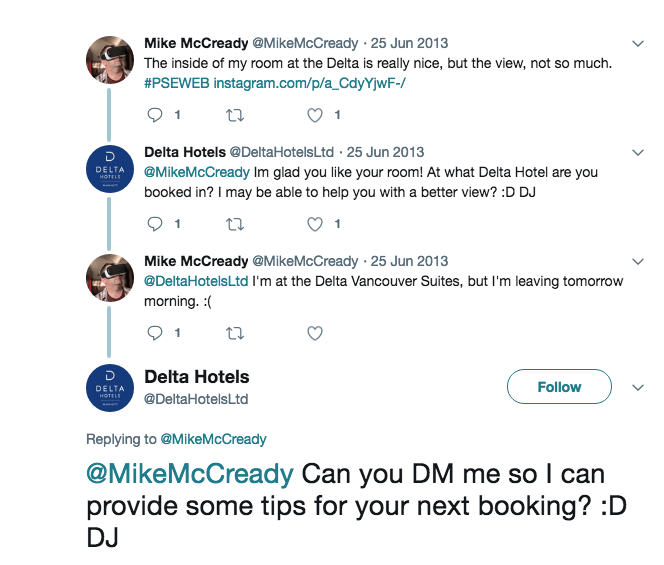
6. Personalized ads on social media
Paid advertising works, which is the reason why more than half of businesses are planning on increasing their social media advertising budget. Considering the rising trends on social media are focused on video and graphic content, it’s no surprise that Instagram will see the majority of ad spending on social media. And not to mention also due to the boost in audience the platform saw in recent times.
Facebook, Youtube, and LinkedIn will also see an increase in ad traffic and content promotion. Marketers report these channels as being the most effective in reaching their business goals according to Hootsuite. And they are quite effective for different types of business growth.
Concerning ad content, you will have to get a little creative to boost your visibility and conversion rate. Use social proof and user-generated content to stand out. You should also focus on creating ephemeral content that is only available for a limited time. As it plays well in the concept of FOMO marketing, the fear of missing out.
7. Social listening & brand involvement
You need to know what’s the word on the proverbial social street. Follow the conversation so you can pitch in and actively engage with what your audience is talking about. But, talking with many people at once is messy and you can lose sight of what they were talking about anyway. Especially when the conversations are happening in several places at once. Don’t worry, Determ has you covered.
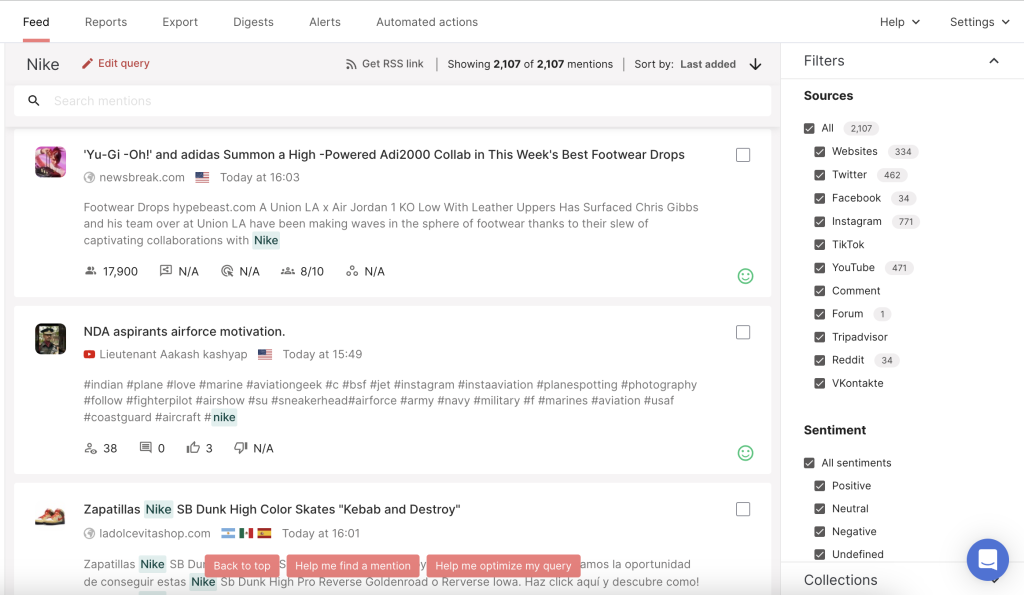
Social listening can be used in many different ways. For example, when someone mentions your brand you want to be there, especially if a customer has a problem or a question. A quick and helpful reply does more for your brand image than ads ever could. But it’s not just about being reactive when you can also be proactive by getting ahead of developing topic trends and see how people react to them.
Another great way why you should include social listening in your marketing strategy is competitor analysis. Monitor competing businesses in your market to see how they are interacting with their audience. What they are doing right and what you can do better in your social approach. And find out on which social channels they are most active on, to discover new opportunities and audiences for your own brand.
Read Branded Keywords: How to Monitor Them and Why
8. Tight-knit communities
The sudden increase of users on social media isn’t all that great, at least not for everyone. For some users, the noise is slowly becoming an issue and they seek other means of communication. Preferably in smaller communities with like-minded people where they can create and share content more freely. These micro-communities have smaller audiences but high engagement rates.
Facebook and LinkedIn were perfectly suited to take advantage of this trend and it shows. Facebook Groups saw a rise in the number of groups which coincides almost perfectly with the current situation the world is facing, as people are socially orientated with an inclination to interact with others. Companies have also taken notice of this trend on social media and are interested in building up their communities more and more.
You can use this to your advantage by simply drawing your audience around a focal point that can be anything from your brand or a specific product. Gather feedback, offer valuable content, gain valuable insights and drive the conversation with your audience. By giving your fans and customers a place to belong you empower your brand.
9. Rise of social justice and brand involvement
More and more brands decide to enter a public discourse on social media concerning social justice, and political and environmental issues. This can be a bold marketing tactic or a sincere involvement, which can harm a segment of the audience either way. More than half of social media users, especially younger audiences support the trend of business activism and would like to see your brand actively engaging on difficult topics. And according to PR statistics, 51% of PR professionals predict Diversity, Equality, and Inclusion (DEI) as a prominent trend for 2024. This shows the growing importance of promoting diversity and inclusion in PR campaigns.
Just look at how a worldwide brand like Nike uses social marketing to tackle social justice and inequality issues as part of its marketing efforts. You can be sure they have measured the response and PR their campaign will generate. Their audience, however was very supportive of this move. As evidenced by the positive viral response and the increase in sales numbers. That is because they know their audience and have created content that appeals to them and their challenges.
This can also humanize your brand by involving it through content on a topic your customers are passionate about. It can increase their positive outlook and loyalty towards you and your brand. Just be careful about how you approach a sensitive topic and make sure that you are in line with your audience’s approval.
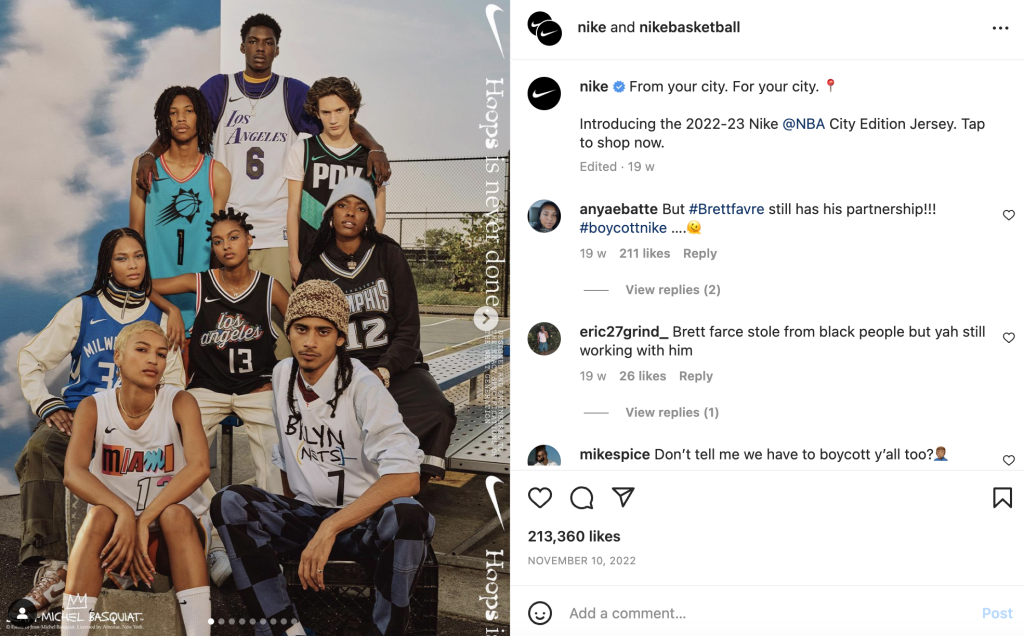
10. Connecting social media and email marketing
The lines between different digital marketing channels are getting thinner. In an effort to gather as much data as possible and use it effectively, marketers want to bridge the gap between them. This has resulted in a multichannel approach with the goal of giving users a complete brand immersion. For this marketing strategy to work, you need to set the tone of your brand and stick to it, align your social and email campaigns to work together.
A great way to combine both channels is to use them for different purposes. Social media platforms are great for building brand awareness and audience interest while email marketing focuses on conversion. A cross-channel campaign like a giveaway on social in return for a subscription to your email newsletter is a good start.
You can do it in reverse too, by uploading a segmented email list on social media to better connect with your users and find new ones. Facebook Custom and Lookalike Audiences can help you out. This can also benefit your ad retargeting campaigns as well.
11. Augmented reality
You know those digital filters you usually see people put on their real-life photos? Those are called augmented reality effects. Essentially, AR enhances real-life visual content and alters how it looks to make it stand out on social media. It’s a very popular feature, especially with younger audiences. But augmented reality as a rising trend on social media doesn’t stop with the fluffy bunny ears or cool sunglasses.
With AR, Facebook and Instagram have improved the social shopping experiences for their users. Although as of yet only several types of products are supported, the tech has a high potential for the buyer to the consumer market.
Since you only need to have a smartphone and with the rise of social commerce, its continuous trending is to be expected. Marketers have taken note of the growing popularity of AR and are starting to implement it in their social outreach campaigns.
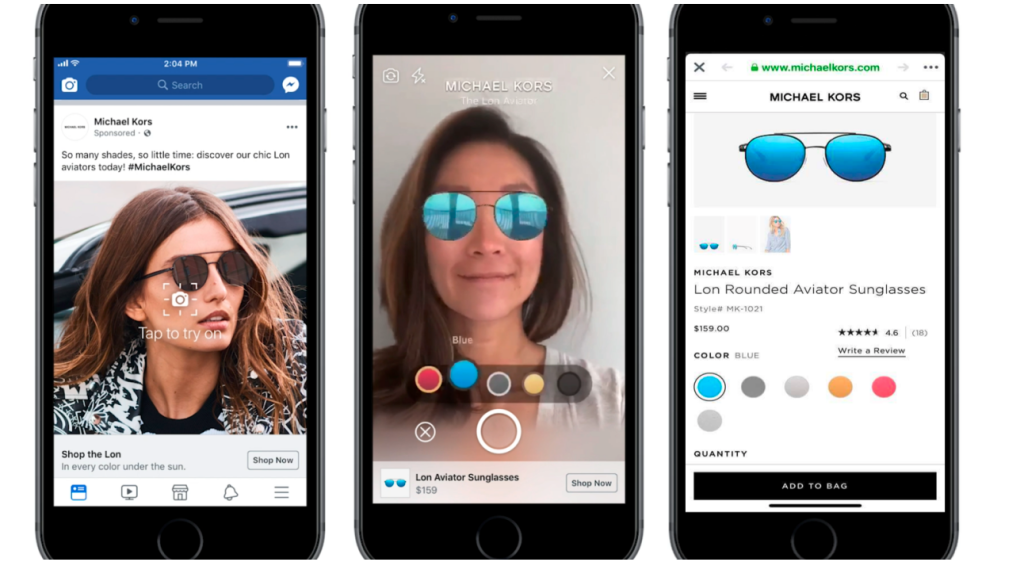
12. Virtual reality
The VR trend isn’t as fast-moving as AR and user adoption is slow but steady. As one of the best technological trends that can provide a fully immersive interaction, it will only continue to pick up speed. The other reason that is hampering the progress of VR is the price. However, any new technology after a period trickles down to the mainstream market and wider use.
You can be sure that virtual reality has a feature, especially with the backing of Facebook and its full support in hardware and content. While the current focus of VR is on virtual reality gaming, it’s safe to say in the future it won’t stop there. YouTube is also already experimenting with virtual reality, offering different experiences like watching concerts, doing sports activities, and going on virtual safari tours.
So you can see that VR is here to stay, and we’re barely scratching the surface of its potential. As the audience for VR grows and more people start using it, eventually, businesses will follow. Imagine showcasing your product in 3D, which will set a new bar for shopping, buying a car, or looking for a new apartment. And the best thing about virtual reality is that this is just the start.

Social Media Trends are Changing
But then again they constantly do. Popular trends have small beginnings. This is why you should keep your ear close to the buzz on social and watch out for opportunities you can take advantage of.
Be careful though, not to spread yourself too thin. Focus on a couple of social media trends you can fit in your marketing plan and do them right. Find out what works for you and your brand while paying attention to your audiences.
